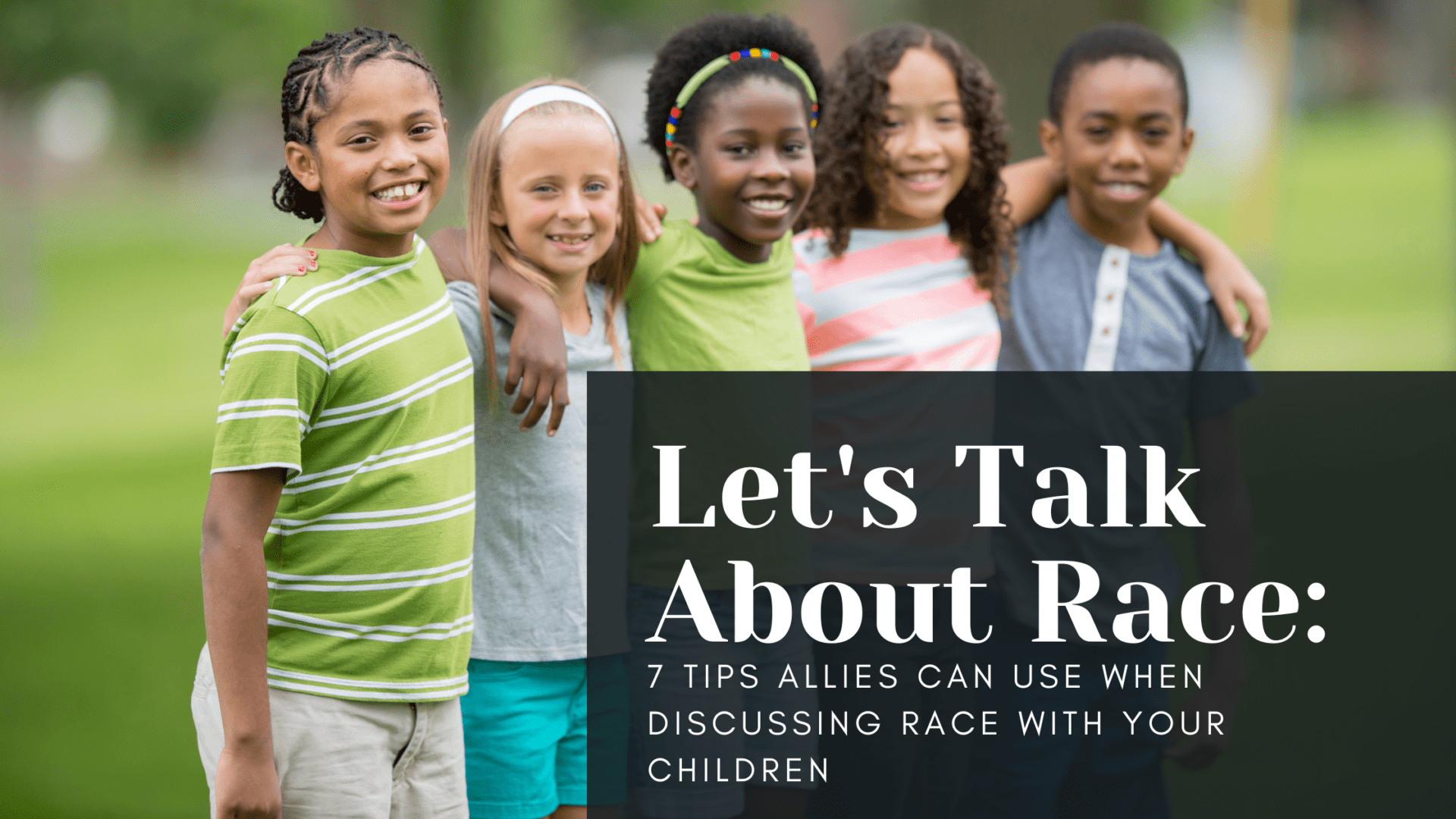
Let’s Talk About Race: 7 Tips Allies Can Use When Discussing Race With Your Children
https://patricemclaurin.com/wp-content/uploads/2022/09/6-2-1024x576.png 1024 576 pmclaurin pmclaurin https://secure.gravatar.com/avatar/14d9f9a6ef8e6cf4818ea0cf92291dd6bd51d25405d18dd5ba8c9a5f629ea1bb?s=96&d=mm&r=gIf we are to move the needle of social justice forward, we must have honest conversations about race. These conversations are necessary within and outside of BIPOC communities, and should involve our children. If you’re an ally of the BIPOC community, you want to make sure that your children understand the world as it exists now and as you’d like for it to be in the future. As such, we must find palatable ways to engage children in the topics of race and racism.
As an ally, when discussing race with your child, be sure to remember that the goal isn’t about making sure that your child is politically correct. You want to help them understand the world around them. You want to inform them that racial issues do exist in our communities, demonstrate what prejudice and discrimination might look like and arm them with tools to help combat these pressing issues.
Here are some ways to start discussing race with your children:
Start early
It’s never too early to start talking about race with your children. Even babies can learn about other cultures and people who are different from them. You can begin by introducing them to books about different races and cultures as early as possible. Your child will be exposed to all kinds of people without having to talk about it directly — just show them!
Be honest
The best way to teach children about race is by being honest with them — even if it means admitting that you don’t know everything there is to know about other cultures or races yourself! You should also be transparent about your own feelings, biases and experiences. Letting your child know that everyone has bias will help them understand that it’s normal to have them — but not okay to treat people disrespectfully because of them.
Model racial empathy
Racism and racial bias are learned behaviors— they’re not innate and they’re not natural. Children learn what they live, so when you show them that you care about people of other races, it makes it easier for them to do the same.
Use everyday events as teachable moments
If you see something on the news that relates to race, use it as an opportunity to start a conversation with your child. You can ask questions like: “What do you think happened there?” or “How would that make you feel if you were in their shoes?” These open-ended questions help to foster empathy and compassion in children.
Positively point out people from different backgrounds
This is especially important if your children aren’t exposed to many people from different backgrounds where they live or go to school. It helps them realize that people who look different than them are no less human than they are —and that they shouldn’t be treated differently based on how they look.
Use books as tools for learning
Reading books together gives you both an opportunity to learn and discuss topics that may be difficult to talk about otherwise. A book like Dandi McLion Has Her Say is a great way to introduce tough topics like prejudice and discrimination. Another great book to share is Have You Thanked an Inventor Today. It highlights black excellence through invention and demonstrates how African-Americans greatly contributed to the American landscape.
Help children to understand that diversity is normal but racism is hurtful
You can use activities to help drive this lesson home. They’re a fun way to teach valuable lessons. Consider this lesson plan, which features activities that focus on the importance of character over skin color.
Hopefully, using these tips will help you to deliver this message to your children in a way that is practical but not preachy. Though there is no magic bullet for talking about race with your children, these are great starting points. Good luck!

